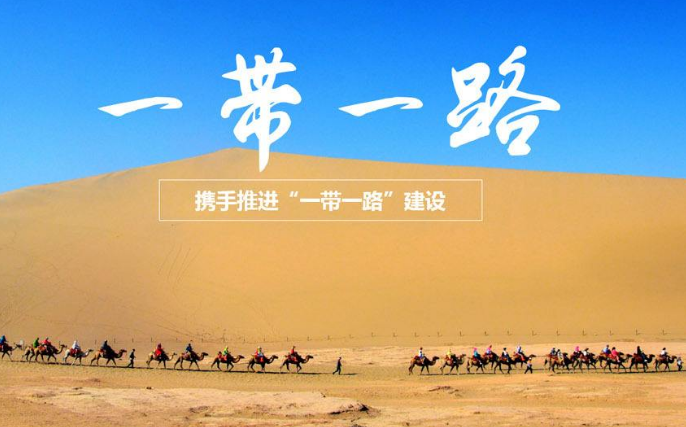Note:Miao Lu, co-founder and Secretary General of the Center for China and Globalization, said in his article Beyond Doha: Building trust and connectivity that according to the Asian Development Bank, Asia faces an infrastructure gap requiring $26 trillion of investment by 2030, while Western politics increasingly looks inward, China has emerged as the driving force to meet this need for greater connectivity. Rather than a geopolitical strategy, the BRI is an open initiative to improve all forms of connectivity.
The full text of the article is as follows:
2018 was a year of ups and downs in the international arena. However, after my recent trip to the Middle East to participate in the 18th Doha Forum, I welcome the new year with renewed optimism. Sharing ideas with people from around the world brought home the power of dialogue and deeper connectivity to overcome our differences.
Doha encapsulates many of the opportunities and challenges of globalization. As such, it was an ideal setting for this gathering of 1,000 thought leaders to discuss the theme "Shaping Policy in an Interconnected World."
At the forum, I was fortunate to have the chance to share views in a panel discussion on "Asian Connectivity." This topic has risen up the agenda in recent years, as global influence shifts Eastward and connectivity has emerged as a central concept binding notions of security, economy, and society.
Asia faces an infrastructure gap requiring $26 trillion of investment by 2030, according to the Asian Development Bank. While Western politics increasingly looks inward, China has emerged as the driving force to meet this need for greater connectivity.
In 2013, the Belt and Road initiative (BRI) was launched as a new model for international cooperation and exchange. It provides a vehicle for China to share its experience, technology and capital to strengthen connectivity across the region and beyond.
The World Bank estimates that the initiative will reduce shipment times and trading costs along BRI corridors by 11.9 percent and 10.2 percent respectively. In turn, this will help more citizens participate in the global economy, promoting prosperity and stability across the world.
Despite these shared benefits, my discussions in Doha were a reminder that the BRI remains subject to suspicion in some quarters. One common misperception is that the BRI is a geopolitical strategy like the Marshall Plan. This misreading ignores the inclusive nature of the BRI, which unlike the Marshall Plan is open to all and not predicated on military alliances. It transcends culture, civilizations and ideologies.
Stuck in a zero-sum mind-set, some argue that China dictates terms for the BRI based only on its own interests, forcing countries into harmful agreements. In reality, countries choose freely to participate of their own accord and projects adhere to the principles of mutual consultation, joint construction and shared benefits.
Take Huajian, China's largest footwear company in Africa, for example. It currently invests in industrial parks across Africa, creating a large number of jobs in the region. Its factories in Ethiopia now produce and export half of Ethiopia's total footwear exports.
Rather than a geopolitical strategy, the BRI is an open initiative to improve all forms of connectivity. In addition to roads and bridges, this includes the soft infrastructure and institutions to facilitate the flow of people, goods, and ideas.
Generally, global public goods and infrastructure are undersupplied due to market failures and coordination problems. This inhibits integration and leaves millions locked out of global markets.
China's role can be compared to that of an angel investor that identifies promising projects and contributes seed money. The aim is that other stakeholders will also invest in subsequent rounds, helping to unlock capital, combine expertise, and ultimately boost global development.
In this way, the BRI can help kick-start virtuous cycles of investment, trade and growth, leading to greater prosperity and stability around the world.
To ensure its long-term success, it is vital that the BRI involve a broad range of stakeholders and expertise. This includes non-state actors such as businesses, NGOs and think tanks, along with government agencies.
Indeed, China has already signed over 50 BRI agreements with international organizations, such as the World Bank, UN, and IMF. Large numbers of leading multinationals are participating in BRI projects, contributing cutting-edge expertise and technology. Given the major role of enterprises, there is scope for a BRI business summit to facilitate input from the business community.
After two days of challenging but fruitful conversations at the Doha Forum, I left with fresh ideas and hope for the future. UN Secretary-General Antonio Guterres captured the mood well in his closing remarks: Dialogue is the most precious - and increasingly scarce - resource in our world today.
Platforms such as the Doha Forum give a vital space to share ideas and find common ground. However, conversations also need to be based on trust, which often seems lacking at present.
Trust cannot be bought overnight. But trust can be nurtured over time by investing in connectivity. This deepens the economic and cultural ties between us, aiding mutual understanding and binding us together in a shared community. A more connected future is a safer, more prosperous future.




 A single purchase
A single purchase









